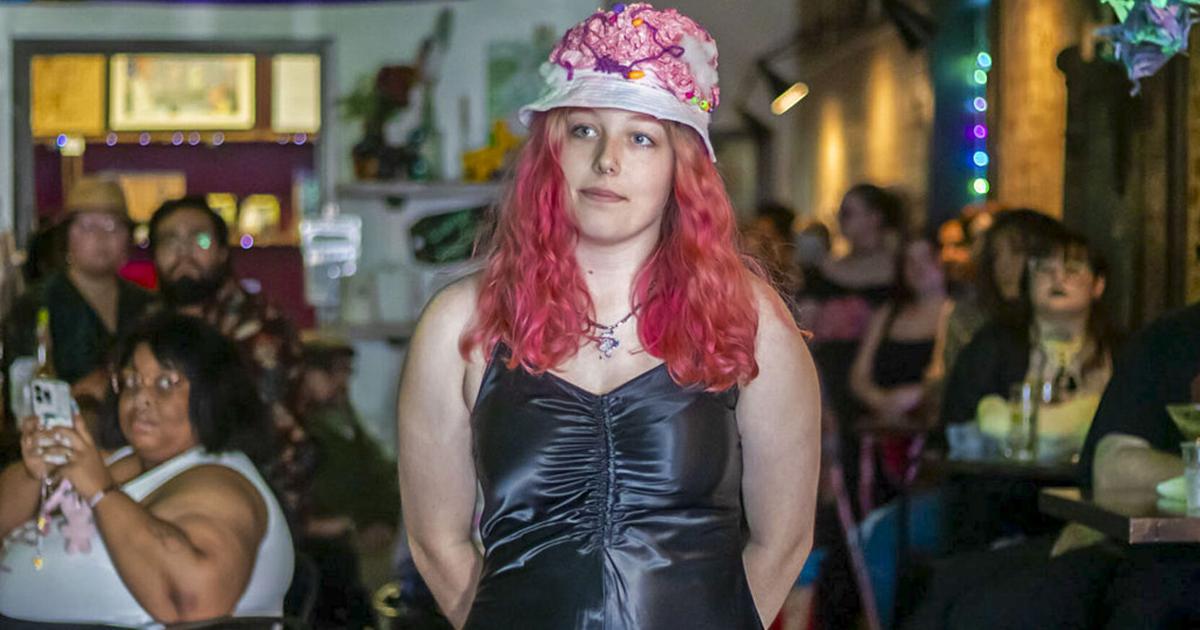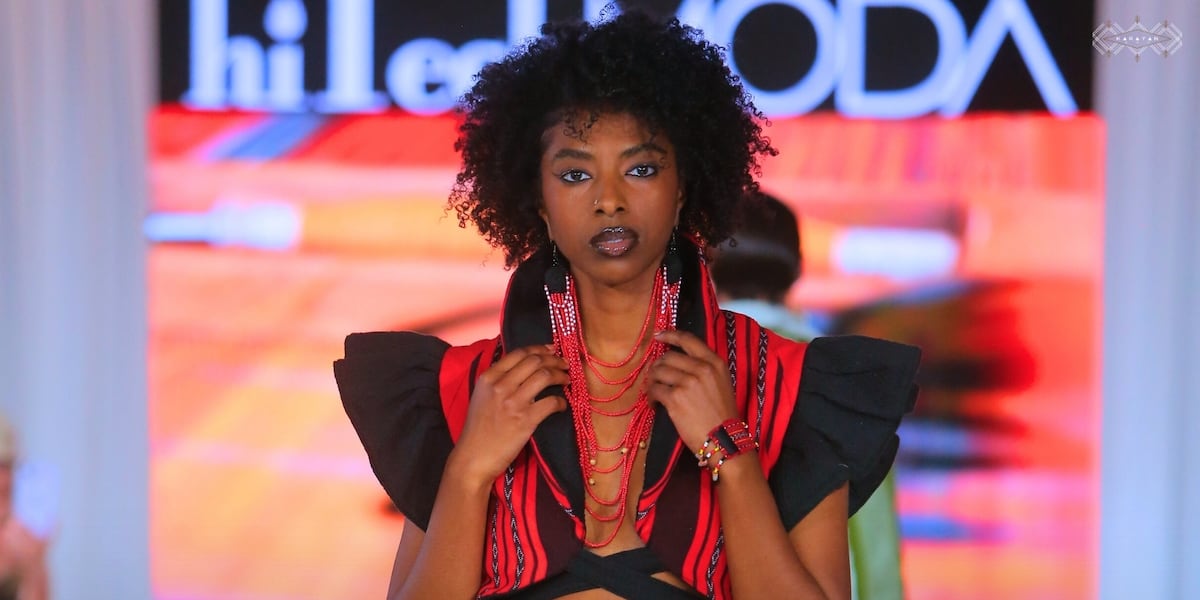On the evening of July 12, a hallway at Bramblitt’s Yellow Dog Art Bar & Gallery transformed into a runway, with models strutting up and down in colorful fiber pieces, each representing various disabilities that affect different parts of the human body.
Artist and university alumna Emily Cavender, also known by her artist aliasOminous Outlooks, hosted theInvisibly Visible Fashion Show as part ofDenton’s Disability Pride Month series of events.
“Invisibly visible is not just a series of wearable pieces,” Cavender said. “[It] is the umbrella of the project of not just visualizing and recognizing invisible illnesses, but also recognizing the invisibility that disabled people face in an inaccessible world.”
Cavender has been creating art since she was young. About three years ago, as her health situation worsened, she began focusing more of her work on her personal experience.
“Partially out of grief, and partially out of action and empathy, I started creating more works centered around my identity as an artist living with disabilities,” Cavender said.
She credited theSpoken Word events at Bramblitt’s Yellow Dog Art Bar & Gallery for encouraging her to continue creating work about her feelings and experiences.
Held every Tuesday night, the event welcomes people to share poems, essays, personal experiences, lyrics or meaningful passages.
Cavender said she began attending the gatherings as a way to process her emotions over the changes in her life and the physical discomfort her body endures. She ended up not only gaining a better understanding of her feelings but also discovering a safe, supportive space.
“It brought joy in that laughter, but also it started building a safe space so that other people feel that they could share what they went through,” Cavender said.
Jacqi Serie, owner of Bramblitt’s Yellow Dog Art Bar & Gallery and a university alumnus, said the crowd that attends the Spoken Word events is very laid-back and welcoming.
“After coming a couple of times, people usually know each other’s names and they’re excited to hear what they’re going to read,” Serie said. “I mean, the goal was just to reinforce a sense of community and let people feel safe about it.”
Cavender said she began the Invisibly Visible project during an uncertain time in her life, when she chose not to pursue a teaching certificate for her art education degree. Instead, she shifted her focus to completing a thesis and began creating fabric pieces alongside it. One of her early pieces was a soft-sculpture spine, which she later made wearable and came to love.
Another piece she crafted reflected a different part of her disability. It was a red, plush uterus made of second-hand fibers, a fanny pack, polyfill, satin ribbon and wire. After sharing a photo of her wearing the uterus piece and a poem on social media, she received an outpouring of support from the community.
“I kind of took a second to realize that this is bigger than me,” Cavender said. “And so after that, I was like, ‘I don’t want to make this just all about my pain, because so many of us experience these invisible disabilities.’”
She added that she began taking suggestions from people and transformed her work into a community project that reflects diverse disability experiences.
The show featured 12 pieces of wearable fiber artwork, showcased by 11 models. Each piece represented different disabilities, such as “Spilling My Guts,” which represented disabilities affecting the gastrointestinal system, “Lost in the Silence,” showcasing hearing impairment and “Bone Spur Ranger,” which showcased conditions affecting the hips, knees, legs and feet.
Each model presented the piece, accompanied by a brief explanation delivered by the host. Some pieces also included poems or written statements reflecting on the models’ personal experiences.
Audience member and local artist Valeria Martinez said the fashion show was powerful, especially when all the models and pieces came together at the end.
“It’s like one community […],” Martinez said. “Like we’re all united in our struggles, even though they are all each different. We all come together still.”
Another audience member, Luna Leeper, a mental health professional, shared a similar sentiment.
“I take away that we all have our own struggles, but through different mediums, we can actually express it very well,” Leeper said. “And like, flip it [and] make a positive turn on it, whatever struggles we may be going through.”
Cavender said she plans to continue creating wearable pieces and hopes the project can help foster a safe, open space for people to share.
“We’re just so sick and tired of being silenced, and sick and tired of the band-aid cures because things have never really been addressed […],” Cavender said. “And the best way we can push against that is to not stop creating and to build community so that we are strong in our communities.”


![Sergio Hudson Spring 2026 Ready-to-Wear Runway, Fashion Show & Collection Review [PHOTOS]](https://news.charm-retirement.com/wp-content/uploads/2025/09/Sergio-Hudson-runway-sp26-GG_001.jpg)